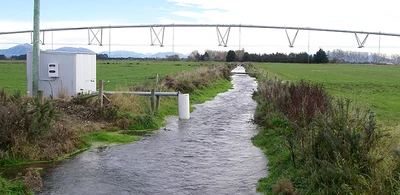Flow trial 'needs to go further'

Better environmental outcomes will be a focus on the continuation of a water use trial in Hinds that could have wider impacts for the region in the future.
A review of the Boundary Drain variable flow five-year trial showed economic benefits but not the corresponding environmental outcomes.
An application to continue the trial is being processed.
Environment Canterbury consents planning manager, Aurora Grant, said the further trial may follow a different path to the 2017 resource consent, “as it will need to build on the learnings from the previous trial, and will need to be considered against legislation”.
The key instrument will be the impact of the National Policy Statement for Freshwater Management 2020 which did not exist when the original trial was conceived.
The initial trial objectives were to maintain or enhance the existing natural, economic and cultural values of the catchment.
ECan water quality scientist, Adrian Meredith, said the crux of the results was the aquatic habitat was “maintained but in a poor condition and not enhanced”.
The economic benefits were that, through improved access to irrigation in the summer, farmers had an increase in profitability of around $1500 per hectare per year.
In moving forward with the trial Meredith said the review highlighted “the issue is as much about habitat and water quality and other issues than it is about flow”.
“We need to be more considering them all together than where this process just started looking at flows alone.”
The Boundary Drain is one of the largest in the area making “it the most useful drain system to trial with” and the trail can have implications for other waterways in the area, Meredith said.
The Hinds Drain Working Party developed the five-year adaptive flow trial on Boundary Drain in 2017, rather than a standardised 150 litres per second flow all year round.
Meredith said the changes were adapted to increase water take reliability over the summer months for irrigation and provide higher flows for migration and life stages of aquatic species in the other months.
The minimum flow was only triggered for just over one year of the five-year period, from late 2020 until the floods at the end of May 2021.
Monitoring was carried out by Fish and Game, ECan, and consent holders with all the data summarised in an independent review by Water Ways Consulting.
Te Rūnanga o Arowhenua’s response to the review was that actions to simply maintain the drain was insufficient and wanted a focus shifted to enhancement.
- By Jonathan Leask

